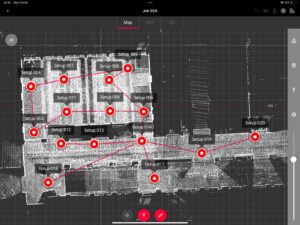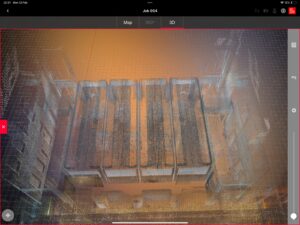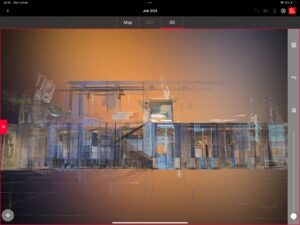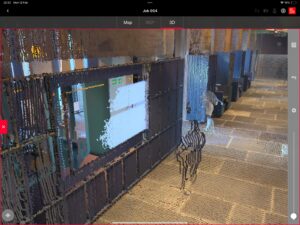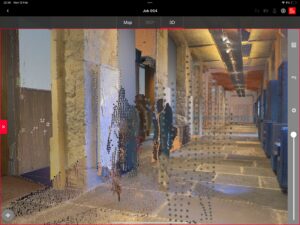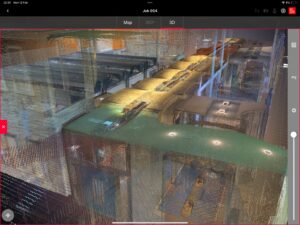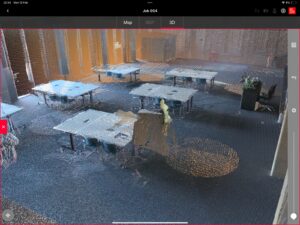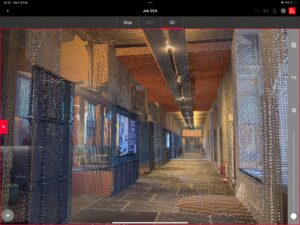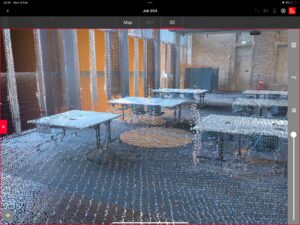Case Study 1: LiDAR Scanning of the Old Medical School
Context and Objectives
The Old Medical School, one of the oldest medical schools with substantial architectural height, was selected as the primary site for implementing LiDAR scanning techniques acquired from uCreate training.
Technology Selection
The BLK360 G1, with its extensive range capabilities, was chosen for its ability to capture the full scope of the building’s façade, which was critical for the comprehensive data collection required for this historic structure.
Scanning Methodology Adjustment
Initial plans to conduct a central scanning operation were altered upon discovery that the extremities, specifically the corners, were not being captured effectively. A strategic decision was made to scan from point 2, facilitating a seamless integration with point 3’s scan for complete data stitching.
Adaptive Scanning Strategy
Faced with the challenge of scanning the entire site in one session, the team adapted their approach by employing multiple scanning points and conducting repeat scans to ensure accuracy. This underscored the importance of pre-planning scanning operations according to the unique characteristics of each site to achieve complete data acquisition.
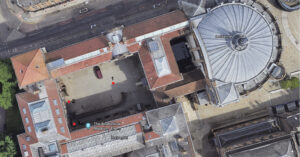
Case Study 2: LiDAR Scanning at the Edinburgh Futures Institute
Selection Rationale
The Edinburgh Futures Institute was selected for the second case study due to its historic significance within the University of Edinburgh and its embodiment of modern challenges and educational methods in its architecture, providing a rich comparison to the Old Medical School.
Advanced Scanning with BLK360 G2
For this second scan, the advanced BLK360 G2 was utilized for its enhanced scanning speed and high-precision range. The process was divided into two distinct phases: classroom scans to establish building dimensions and detailed corridor scans to capture the finer architectural elements.
Classroom Scanning
The first phase involved scanning from each classroom corner, capturing detailed measurements to establish the building’s spatial dimensions. This provided a foundational layout from which further details could be extrapolated.
Corridor Detail Scanning
The second phase focused on the internal corridors, using an inside-out scanning approach. This comprehensive method yielded not only spatial data but also detailed color, intensity, and textural data, which would be vital for future design considerations.
Data Processing and Workflow
The data processing stage was crucial in understanding the storage and manipulation of point cloud data. The team gained expertise in selecting and filtering data, as well as in mastering the software workflow necessary for processing LiDAR data, which included:
Initial data capture with the LiDAR scanner.
Data synchronization via Cyclone FIELD 360 on an iPad.
Point linking and exportation in a specified format.
Importation into Cyclone REGISTER 360 for editing.
Selection of specific data attributes for final export, detailing key characteristics like distance, color, and material properties.
